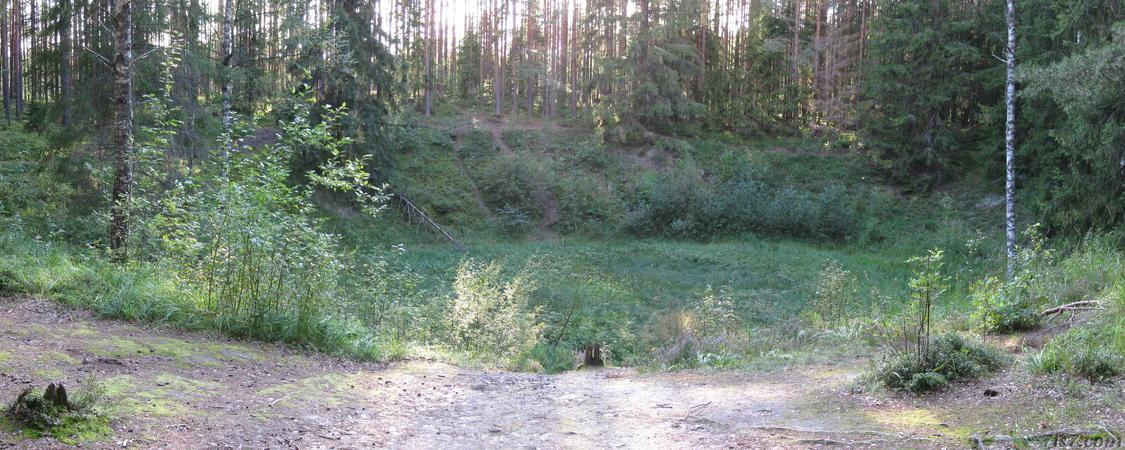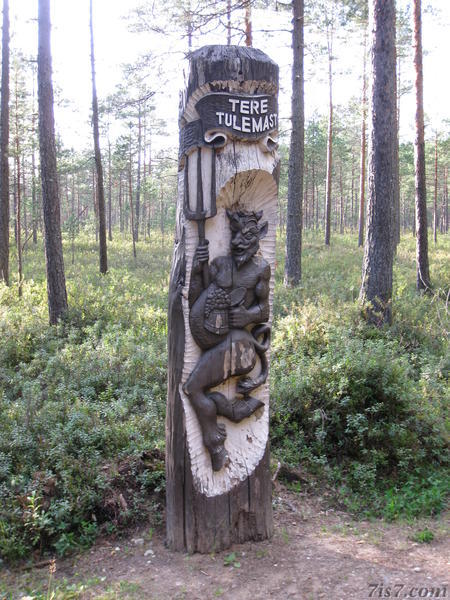Ilumetsa Meteorite Crater
Ilumetsa Meteoriidikraater
Just south of the Põlva-Värska road near the Meenikunno marshland is a meteorite crater impact site that was discovered in 1938. Five depressions were discovered of which two are certainly of meteoric origin. Of those two the largest is the Põrguhaud crater with a diameter varying between 70 and 80 meters and a depth of 12.5 meters. The smaller one, Sügavhaud, is 50 meters wide and 4.5 meters deep. The craters have been estimated to be around 6600 years old.
The area is a marshland so a walkway of wooden planks has been laid for visitors to reach the Põrguhaud crater. The bottom of the crater itself is filled with a 2.5 meters thick layer of peat. I have never managed to find any of the other depressions in the area, including the Sügavhaud crater.


The craters and the other depressions in the area carry unusual names. Põrguhaud means Hell's grave, Kuradihaud means Devil's grave, Sügavhaud means Deep grave, and Tondihaud means Ghost's grave. Legend has it that a church used to stand where the Põrguhaud crater is now, until one night three impious brothers entered the church upon which the church sank into the ground. It is said that ever since the area has been inhabited by devils.
The legend and the unusual names of the craters are reinforced by several carved wooden statues of devils along the path to the crater.


The Põrguhaud crater in Ilumetsa is the fourth largest known meteorite impact crater in Estonia. The largest crater with a diameter of 7 kilometers is the one at Neugrund, which is located under the sea just off the north-western coast of mainland Estonia. The second largest is located near Kärdla on the island of Hiiumaa. It is 4 kilometers wide, but as it is 450 million years old it is hard to detect in the landscape. The third largest, the Kaali meteorite crater on Saaremaa, is much younger. It is estimated to be less than 3000 years old, and is the best known and most impressive crater in Estonia.
Location: 57°57'36"N 27°24'10"E on: Google Maps, OpenStreetMap, Maa Amet.
Copyright Otto de Voogd 2009


